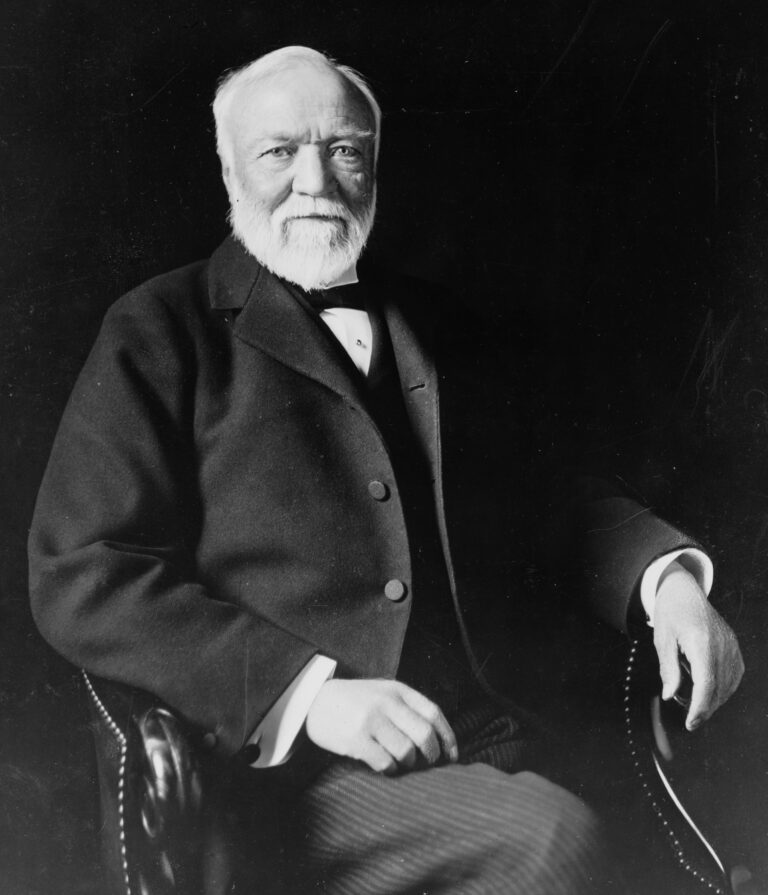Unleashing Your Leadership Potential: A Comprehensive Guide to Improving Leadership Effectiveness
Embarking on Your Leadership Journey
In today’s rapidly changing world, the significance of effective leadership has never been more evident. As organizations across industries face increasing complexity and competition, the need for leaders who can successfully navigate this dynamic environment is paramount. From multinational corporations to small nonprofits, the role of a leader has evolved to encompass not only the traditional responsibilities of decision-making and resource allocation but also the ability to inspire, innovate, and adapt to an ever-shifting landscape.
With this evolution comes the necessity for continuous improvement and growth in leadership skills. The leaders who thrive in the modern world are those who recognize the importance of cultivating their abilities and expanding their knowledge. They understand that effective leadership is not a destination but an ongoing journey of personal and professional development.
The purpose of this article is to provide a comprehensive guide for improving leadership effectiveness. By exploring various aspects of leadership, from self-awareness and emotional intelligence to communication and decision-making, we aim to equip current and aspiring leaders with the tools and insights necessary to unlock their full potential.
It is worth mentioning that the importance of effective leadership transcends the boundaries of the business world. It also extends to various spheres of life, such as politics, education, sports, and even personal relationships. Leaders who can effectively guide, inspire, and empower others are vital in shaping our collective future and addressing the complex challenges we face as a society.
As we delve into the many facets of leadership, it is essential to acknowledge that each leader is unique. While certain core principles and practices apply universally, the context in which they are employed, and the individual’s personal style, will ultimately determine their success. By understanding and embracing this diversity, leaders can adapt their approach to various situations and cultivate their unique brand of effectiveness.
In the following sections, we will explore a range of topics and strategies designed to enhance leadership effectiveness. From the foundational elements of self-awareness and developing a growth mindset to the more advanced skills of leading with vision and purpose, building high-performing teams, and nurturing future leaders, this comprehensive guide aims to serve as a roadmap for leaders at any stage of their journey.
Ultimately, the journey towards leadership effectiveness is a lifelong process marked by continuous learning, growth, and adaptation. By embracing this mindset and applying the insights and practices shared in this article, leaders can maximize their potential and leave a lasting impact on their organizations, their teams, and the world at large.
Self-awareness: The foundation of leadership effectiveness
The journey towards improved leadership effectiveness begins with self-awareness. As the cornerstone of personal and professional growth, self-awareness enables leaders to recognize their strengths and weaknesses, adapt to different situations, and foster meaningful connections with others. In this section, we will delve into the importance of self-awareness in leadership and explore strategies for cultivating this essential quality.
Understanding your leadership style
Every leader has a unique style that reflects their personality, values, and experiences. Understanding your leadership style is crucial for leveraging your strengths and mitigating potential weaknesses. To gain insight into your style, consider the following:
-
Reflect on your experiences: Think about your past leadership experiences and how you have approached various challenges. What patterns do you notice in your decision-making, communication, and conflict resolution?
-
Seek feedback: Ask for honest feedback from your team members, peers, and supervisors. They can provide invaluable insights into your leadership style and its impact on others.
-
Utilize assessments: Numerous tools and assessments are available to help you better understand your leadership style, such as the Myers-Briggs Type Indicator (MBTI) or the DiSC assessment.
Assessing your strengths and weaknesses
Identifying your strengths and weaknesses is critical for maximizing your leadership potential. By acknowledging your areas of expertise and those that require improvement, you can focus your efforts on targeted growth.
-
Conduct a self-assessment: Take the time to evaluate your skills, knowledge, and personal traits. Be honest and objective in identifying your strengths and weaknesses.
-
Consider feedback from others: Use feedback from peers, subordinates, and supervisors to gain a broader perspective on your strengths and areas for improvement.
-
Prioritize areas for growth: Determine which weaknesses, if addressed, would have the most significant impact on your leadership effectiveness and create an action plan to improve those areas.
Embracing feedback from others
Feedback is an invaluable resource for leaders seeking to improve their effectiveness. By actively seeking and embracing feedback, leaders can gain crucial insights into their performance and identify opportunities for growth.
-
Create a culture of feedback: Encourage open and honest communication within your team by expressing your commitment to growth and improvement. Make it clear that you value their input and are willing to learn from their perspectives.
-
Ask specific questions: When soliciting feedback, ask targeted questions that focus on particular areas of your leadership, such as decision-making, communication, or team dynamics. This will help elicit more actionable and meaningful insights.
-
Respond graciously and take action: Thank your team members for their feedback and demonstrate your commitment to growth by implementing changes based on their input. By doing so, you will not only improve your leadership effectiveness but also strengthen your relationships with your team.
Self-awareness serves as the foundation for leadership effectiveness. By understanding your leadership style, assessing your strengths and weaknesses, and embracing feedback from others, you can embark on a path of continuous growth and improvement. As you cultivate your self-awareness, you will become better equipped to adapt to various situations, connect with your team members, and ultimately, maximize your leadership potential.
Developing a growth mindset
One of the most critical attributes of successful leaders is their willingness to embrace challenges and continuously grow. A growth mindset, as coined by psychologist Carol Dweck, is the belief that abilities and intelligence can be developed through dedication and hard work. Leaders with a growth mindset are more adaptable, innovative, and resilient in the face of change. In this section, we will discuss the importance of cultivating a growth mindset and explore strategies to develop this powerful perspective.
Embracing challenges and learning from failures
A growth mindset fosters a positive attitude towards challenges and setbacks. Leaders who embrace this mindset see difficulties as opportunities to learn and grow, rather than as insurmountable obstacles.
-
Reframe challenges: When faced with a challenge, view it as an opportunity to expand your skills and knowledge. Recognize that success often comes after a series of setbacks and learn to embrace the process.
-
Learn from mistakes: Adopt a reflective approach to failure. Analyze what went wrong and use those insights to inform your future actions. Encourage your team to do the same, fostering a culture that values learning from setbacks.
-
Celebrate small wins: Acknowledge and celebrate your progress and accomplishments, even if they seem insignificant. This practice will help reinforce your growth mindset and motivate you to tackle bigger challenges.
Cultivating curiosity and a love for learning
Curiosity is a powerful driver of growth and innovation. Leaders who are genuinely curious and passionate about learning are more likely to discover new ideas, challenge the status quo, and adapt to change.
-
Ask questions: Foster a questioning mindset by continually seeking to understand the “why” behind various phenomena, processes, or decisions. Encourage your team to do the same, promoting a culture of inquiry and exploration.
-
Seek diverse experiences: Broaden your horizons by engaging in new experiences, both within and outside your industry. Attend conferences, read widely, and explore new interests to keep your mind sharp and open to new ideas.
-
Share knowledge: Encourage a culture of learning within your team by sharing new insights, hosting workshops, or inviting guest speakers. This practice will not only benefit your growth but also inspire your team members to embrace continuous learning.
Practicing resilience and adaptability
In today’s fast-paced world, change is inevitable. Leaders with a growth mindset are better equipped to navigate uncertainty and adapt to new circumstances with resilience and agility.
-
Develop coping strategies: Identify healthy ways to manage stress and setbacks, such as exercise, meditation, or talking with a trusted confidant. These practices can help you maintain a positive outlook and persevere through challenges.
-
Embrace change: Adopt a flexible approach to leadership, recognizing that the best course of action may vary depending on the context. Be willing to let go of old ideas or practices that no longer serve you or your organization.
-
Seek out new opportunities: Actively look for ways to challenge yourself and your team, whether through new projects, partnerships, or professional development. This proactive approach will help you stay agile and open to growth.
Developing a growth mindset is a vital component of improving leadership effectiveness. By embracing challenges, cultivating curiosity, and practicing resilience, leaders can foster an attitude of continuous improvement and adaptability. This mindset, in turn, will empower them to navigate the complexities of the modern world, inspire their teams, and drive innovation and success within their organizations.
Enhancing emotional intelligence
Emotional intelligence (EQ) is the ability to recognize, understand, and manage both your emotions and the emotions of those around you. Research has consistently demonstrated that EQ is a key predictor of leadership effectiveness, often more important than technical skills or cognitive intelligence. In this section, we will discuss the critical role of emotional intelligence in leadership and explore strategies for enhancing this vital competency.
Developing self-awareness and self-regulation
At the core of emotional intelligence is the ability to recognize and understand one’s emotions. This self-awareness is essential for leaders, as it enables them to manage their emotional responses and make more informed decisions.
-
Practice mindfulness: Engage in mindfulness exercises, such as meditation or deep breathing, to help you become more aware of your thoughts and emotions. This practice will allow you to respond more thoughtfully and effectively to various situations.
-
Keep a journal: Regularly jot down your thoughts and emotions, particularly after challenging experiences. This practice can help you identify patterns in your emotional responses and develop strategies for managing them more effectively.
-
Set personal boundaries: Recognize your emotional triggers and establish healthy boundaries to protect your well-being. By doing so, you can prevent emotional burnout and maintain a balanced perspective.
Building empathy and social awareness
Empathy is the ability to understand and share the feelings of others. Leaders who possess strong empathy skills are better equipped to build trust, foster collaboration, and inspire their teams.
-
Active listening: Practice active listening by giving your full attention to others, making eye contact, and asking open-ended questions to encourage deeper sharing. This practice will help you better understand and empathize with your team members’ perspectives and emotions.
-
Develop perspective-taking: Make an effort to see situations from multiple points of view, especially those that differ from your own. This practice will help you develop a more nuanced understanding of your team members’ experiences and emotions.
-
Show compassion: Demonstrate genuine care and concern for your team members’ well-being. By acknowledging their feelings and offering support, you can create a more empathetic and supportive work environment.
Cultivating relationship management skills
Effective leadership requires the ability to manage and nurture relationships with diverse stakeholders. Leaders with high EQ can skillfully navigate interpersonal dynamics, resolve conflicts, and foster collaboration.
-
Build trust: Establish a foundation of trust with your team members by being reliable, transparent, and accountable. Trust is the bedrock of healthy relationships and is critical for fostering collaboration and commitment.
-
Practice effective communication: Communicate clearly and authentically, ensuring that your message aligns with your emotions and intentions. This practice will help you build stronger connections and avoid misunderstandings.
-
Resolve conflicts constructively: Develop the skills to address conflicts in a productive and respectful manner. By focusing on the issue at hand and seeking mutually beneficial solutions, you can maintain healthy relationships and foster collaboration.
Enhancing emotional intelligence is a critical aspect of improving leadership effectiveness. By developing self-awareness, building empathy, and cultivating relationship management skills, leaders can create more positive and productive work environments, inspire their teams, and drive success within their organizations. As you continue to strengthen your EQ, you will not only become a more effective leader but also a more compassionate and empathetic human being.
Communication: The key to leadership success
Effective communication is a cornerstone of successful leadership. Leaders who can clearly and concisely convey their ideas, listen attentively, and create an open and inclusive environment foster trust, collaboration, and innovation within their teams. In this section, we will explore the crucial role of communication in leadership and provide strategies for honing your communication skills.
Mastering active listening
Active listening is a critical communication skill that involves fully engaging with the speaker, paying close attention to their words, and responding thoughtfully. By mastering active listening, leaders can gain a deeper understanding of their team members’ perspectives, needs, and emotions.
-
Give your undivided attention: When engaging in conversation, focus solely on the speaker and avoid distractions, such as checking your phone or multitasking.
-
Use verbal and nonverbal cues: Show that you are listening and engaged by nodding, maintaining eye contact, and offering verbal affirmations, such as “I see” or “That makes sense.”
-
Ask open-ended questions: Encourage further elaboration by asking questions that require more than a simple “yes” or “no” answer. This practice demonstrates your genuine interest and promotes deeper understanding.
Developing clear and concise messaging
Leaders must be able to articulate their ideas and expectations clearly and concisely. By honing this skill, leaders can ensure that their team members understand their vision and objectives, thereby increasing the likelihood of success.
-
Be purposeful: Before communicating, take a moment to consider your goals and the key points you want to convey. This practice will help you stay focused and deliver a more coherent message.
-
Use simple language: Avoid jargon and overly complex terminology, opting instead for clear and straightforward language. This approach will make your message more accessible and easier to understand.
-
Provide context: When presenting new ideas or instructions, provide relevant context to help your team members grasp the bigger picture. This practice will promote a deeper understanding of the task at hand and its overall significance.
Nurturing open and inclusive communication
Creating an environment in which all team members feel comfortable sharing their thoughts, ideas, and concerns is essential for fostering collaboration and innovation. Leaders who encourage open and inclusive communication can tap into their team’s collective intelligence and promote a sense of belonging.
-
Encourage diverse perspectives: Actively seek input from all team members, particularly those who may be hesitant to share their thoughts. Recognize the value of diverse perspectives and encourage respectful debate and discussion.
-
Practice transparency: Share relevant information with your team, including successes, challenges, and changes within the organization. This practice will foster trust and demonstrate your commitment to open communication.
-
Model vulnerability: Show your team members that it is safe to express their emotions, concerns, and ideas by sharing your own vulnerabilities. This practice will create a culture of psychological safety in which team members feel empowered to take risks and share their thoughts openly.
Effective communication is an essential component of successful leadership. By mastering active listening, developing clear and concise messaging, and nurturing open and inclusive communication, leaders can forge strong relationships, foster collaboration, and drive success within their organizations. As you continue to hone your communication skills, you will not only enhance your leadership effectiveness but also create a more positive and productive work environment for your team.
Leading with vision and purpose
Vision and purpose are integral components of effective leadership. Leaders who articulate a clear and compelling vision, align their personal and organizational values, and inspire their teams towards shared goals can create a sense of direction and drive meaningful change. In this section, we will explore the importance of leading with vision and purpose and provide strategies for cultivating these essential leadership qualities.
Creating a compelling vision
A compelling vision serves as a roadmap for your team, providing a clear and inspiring picture of the future you aspire to create. By articulating a compelling vision, leaders can galvanize their team’s efforts and foster a sense of purpose.
-
Reflect on your aspirations: Consider the impact you want to have on your team, organization, and broader community. What does success look like, and how will you know when you have achieved it?
-
Be specific and actionable: Craft a vision statement that is both specific and actionable, outlining the key outcomes you aim to achieve and the steps required to reach them. This clarity will help your team members understand their roles and responsibilities in achieving the vision.
-
Communicate your vision: Share your vision with your team and stakeholders, using engaging storytelling techniques to make it memorable and inspiring. Reinforce your vision regularly through team meetings, presentations, and other communication channels.
Aligning personal and organizational values
Values are the guiding principles that shape your decisions, actions, and behavior as a leader. By aligning your personal values with those of your organization, you can create a strong foundation for ethical and purpose-driven leadership.
-
Identify your core values: Reflect on the values that are most important to you and that guide your leadership approach. Consider which values you will not compromise, even in the face of adversity or pressure.
-
Understand your organization’s values: Familiarize yourself with your organization’s mission, vision, and core values. Assess the degree to which these values align with your own and identify any areas of misalignment.
-
Bridge the gap: If you notice discrepancies between your personal and organizational values, consider strategies for aligning them more closely. This alignment may involve refining your leadership approach, advocating for changes within your organization, or seeking opportunities that better align with your values.
Inspiring and motivating others towards a shared goal
Inspiring leadership involves motivating and empowering your team members to work towards a shared vision. By connecting their individual efforts to a larger purpose, you can foster a sense of meaning and commitment that drives success.
-
Connect the dots: Help your team members understand how their roles and responsibilities contribute to the overall vision. By demonstrating the link between their day-to-day tasks and the larger purpose, you can increase their engagement and motivation.
-
Recognize and celebrate achievements: Acknowledge your team members’ accomplishments and express gratitude for their contributions. Celebrating milestones and successes will not only boost morale but also reinforce the connection between individual efforts and the shared vision.
-
Foster a growth-oriented culture: Encourage continuous learning and improvement by providing opportunities for professional development, setting challenging goals, and embracing a growth mindset. This approach will enable your team members to grow and thrive, ultimately contributing to the realization of your shared vision.
Leading with vision and purpose is a critical aspect of effective leadership. By creating a compelling vision, aligning personal and organizational values, and inspiring your team members towards shared goals, you can drive meaningful change and achieve lasting success. As you continue to refine your leadership approach, keep your vision and purpose at the forefront of your efforts, fostering a sense of direction and unity that propels your team forward.
Building high-performing teams
High-performing teams are a critical asset for any organization, driving innovation, productivity, and success. As a leader, one of your primary responsibilities is to create an environment in which your team members can thrive and excel. In this section, we will discuss strategies for building high-performing teams by fostering a culture of trust and psychological safety, promoting diversity, equity, and inclusion, and encouraging collaboration and healthy conflict resolution.
Fostering a culture of trust and psychological safety
Trust and psychological safety are essential for creating a high-performing team. When team members feel safe to express their thoughts, take risks, and make mistakes without fear of retribution, they are more likely to innovate, collaborate, and learn from their experiences.
-
Be reliable and consistent: Demonstrate your trustworthiness by following through on your commitments, communicating openly and honestly, and maintaining consistency in your actions and decisions.
-
Encourage open communication: Create an environment in which team members feel comfortable sharing their ideas, concerns, and emotions. Foster a culture of active listening and empathetic responses, ensuring that all voices are heard and valued.
-
Admit and learn from mistakes: Model vulnerability by acknowledging your own mistakes and using them as opportunities for growth. This practice will help to normalize failure as an essential part of the learning process and encourage your team members to take risks and innovate.
Promoting diversity, equity, and inclusion
Diverse, equitable, and inclusive teams are more innovative, adaptable, and effective. By fostering an environment that values and embraces diversity, you can tap into the unique talents, perspectives, and experiences of your team members, driving success for your organization.
-
Champion diversity: Actively seek out and value team members with diverse backgrounds, experiences, and perspectives. Recognize the importance of diversity for innovation and problem-solving and encourage your team to do the same.
-
Address unconscious bias: Educate yourself and your team about the various forms of unconscious bias that can hinder diversity, equity, and inclusion. Develop strategies to identify and mitigate these biases within your team and organization.
-
Create inclusive practices: Ensure that your team’s processes, policies, and communication styles are inclusive and accessible to all members. Provide resources and support to help team members feel valued and included, regardless of their background or identity.
Encouraging collaboration and healthy conflict resolution
Collaboration and healthy conflict resolution are crucial for high-performing teams, allowing them to leverage their collective intelligence and navigate challenges effectively.
-
Foster a collaborative mindset: Encourage your team members to work together and share ideas, emphasizing the importance of collective success over individual achievements. Provide opportunities for team-building activities and joint projects to strengthen relationships and promote collaboration.
-
Set clear expectations: Establish guidelines for respectful and constructive communication, outlining how your team should approach disagreements and conflicts. This clarity will help to create a shared understanding of the desired team culture and foster a more collaborative environment.
-
Facilitate conflict resolution: Act as a mediator when conflicts arise, guiding your team members through the process of identifying the root causes, exploring potential solutions, and reaching a mutually beneficial resolution. By developing these conflict resolution skills, your team can learn to navigate challenges effectively and collaboratively.
Building high-performing teams is a vital aspect of successful leadership. By fostering a culture of trust and psychological safety, promoting diversity, equity, and inclusion, and encouraging collaboration and healthy conflict resolution, you can create an environment in which your team members can thrive and excel. As you continue to refine your leadership approach, prioritize these essential components of team-building to drive innovation, productivity, and success within your organization.
Decision-making and problem-solving skills
Effective decision-making and problem-solving skills are critical for successful leadership. These skills enable leaders to navigate challenges, identify opportunities, and make informed choices that drive progress within their organizations. In this section, we will discuss strategies for balancing intuition and data-driven approaches, encouraging innovative thinking and calculated risk-taking, and managing complexity and ambiguity in the decision-making process.
Balancing intuition and data-driven approaches
Great leaders know when to trust their intuition and when to rely on data-driven insights. Striking the right balance between these two approaches is crucial for making informed decisions that lead to successful outcomes.
-
Develop your intuition: Practice honing your intuitive skills by paying attention to your gut feelings and reflecting on past experiences. As you gain more experience as a leader, your intuition will become a valuable source of insight and guidance.
-
Gather and analyze data: Use data-driven insights to inform your decision-making by collecting relevant information, analyzing trends, and seeking input from team members and experts. This practice will help you make more objective and well-informed decisions.
-
Find the balance: Recognize when to trust your intuition and when to rely on data-driven insights. Consider factors such as time constraints, the availability of data, and the nature of the decision at hand. By combining both intuition and data-driven approaches, you can make more effective decisions that drive success.
Encouraging innovative thinking and calculated risk-taking
Innovative thinking and calculated risk-taking are essential for driving growth and staying competitive in today’s rapidly evolving business landscape. Leaders must create an environment that encourages creativity and experimentation while mitigating potential risks.
-
Cultivate a culture of innovation: Foster a mindset of continuous improvement and curiosity within your team. Encourage your team members to explore new ideas, challenge assumptions, and experiment with new approaches.
-
Assess risks and rewards: When evaluating potential risks, consider both the potential downsides and the potential benefits of a given decision. By conducting a thorough risk-reward analysis, you can make more informed choices and mitigate potential negative outcomes.
-
Learn from failure: Embrace failure as an opportunity for learning and growth. Encourage your team to view setbacks as valuable lessons that can inform future decisions and drive continuous improvement.
Managing complexity and ambiguity
Leaders often face complex and ambiguous situations that require careful analysis and nuanced decision-making. Developing the skills to navigate these challenging circumstances is crucial for effective leadership.
-
Embrace uncertainty: Recognize that uncertainty is a natural part of the decision-making process and develop the ability to adapt and pivot as new information becomes available. By maintaining a flexible mindset, you can navigate ambiguity more effectively.
-
Simplify complex issues: Break down complex problems into smaller, more manageable components. By analyzing each component individually, you can gain a clearer understanding of the overall issue and identify potential solutions more effectively.
-
Seek diverse perspectives: Consult with team members, colleagues, and experts who possess different perspectives and experiences. This practice will help you develop a more comprehensive understanding of complex issues and explore a wider range of potential solutions.
Effective decision-making and problem-solving skills are essential components of successful leadership. By balancing intuition and data-driven approaches, encouraging innovative thinking and calculated risk-taking, and managing complexity and ambiguity, leaders can navigate challenges and drive success within their organizations. As you continue to refine your leadership approach, prioritize the development of these critical skills to enhance your effectiveness and achieve lasting impact.
Developing future leaders
One of the most important responsibilities of a leader is to identify, nurture, and develop the next generation of leaders within their organization. By cultivating a pipeline of high-potential talent, leaders can ensure the long-term success and sustainability of their teams and organizations. In this section, we will discuss strategies for identifying and nurturing high-potential talent, providing opportunities for growth and development, and embracing coaching and mentoring as essential leadership practices.
Identifying and nurturing high-potential talent
High-potential talent is the lifeblood of any organization. By identifying and nurturing these individuals, leaders can foster a culture of excellence and drive success within their teams.
-
Recognize potential: Look for team members who demonstrate a strong work ethic, a willingness to learn, and the ability to adapt to new challenges. These individuals often possess the qualities necessary to become effective leaders.
-
Provide feedback and encouragement: Offer constructive feedback to help high-potential team members recognize their strengths and areas for improvement. Encourage them to take on new challenges and continue developing their skills.
-
Create a talent pipeline: Develop a systematic approach to identifying, assessing, and nurturing high-potential talent within your organization. This process will help you create a robust pipeline of future leaders who are prepared to step into leadership roles when the time comes.
Providing opportunities for growth and development
To cultivate future leaders, it is essential to provide opportunities for growth and development that allow them to hone their skills and expand their knowledge.
-
Offer challenging assignments: Assign high-potential team members to projects that will stretch their abilities and expose them to new challenges. These experiences will help them develop the skills and expertise necessary for leadership roles.
-
Encourage cross-functional collaboration: Provide opportunities for high-potential talent to work with colleagues from different departments and backgrounds. This exposure will help them broaden their perspectives and develop a more comprehensive understanding of the organization.
-
Invest in professional development: Support high-potential team members in their pursuit of professional development opportunities, such as conferences, workshops, and training programs. These experiences will help them acquire new skills, expand their networks, and stay current on industry trends.
Coaching and mentoring as essential leadership practices
Coaching and mentoring are powerful tools for developing future leaders, as they provide personalized guidance, support, and feedback that can accelerate growth and development.
-
Be a coach: Adopt a coaching mindset by offering guidance, asking thought-provoking questions, and helping high-potential talent find their own solutions to challenges. This approach will empower them to take ownership of their development and become more effective problem solvers.
-
Find or become a mentor: Encourage high-potential team members to seek out mentors who can offer valuable insights, guidance, and support. Alternatively, consider serving as a mentor to others within your organization, sharing your expertise and experiences to help them grow and develop as leaders.
-
Foster a culture of mentorship: Promote a culture of mentorship within your organization by encouraging leaders at all levels to engage in coaching and mentoring relationships. By fostering a supportive and collaborative environment, you can accelerate the development of future leaders and drive success for your organization.
Developing future leaders is a critical aspect of successful leadership. By identifying and nurturing high-potential talent, providing opportunities for growth and development, and embracing coaching and mentoring as essential leadership practices, you can cultivate a pipeline of future leaders who are prepared to drive success within your organization. As you continue to refine your leadership approach, prioritize the development of future leaders to ensure the long-term sustainability and success of your team and organization.
Continuous improvement and staying relevant
In today’s rapidly changing business landscape, leaders must continually adapt and evolve to stay relevant and effective. Embracing a mindset of continuous improvement is essential for maintaining a competitive edge and driving success within your organization. In this section, we will discuss strategies for embracing lifelong learning and professional development, adapting to technological advancements and industry trends, and networking and learning from other successful leaders.
Embracing lifelong learning and professional development
Lifelong learning and professional development are crucial for leaders who wish to stay current and maintain their effectiveness in a constantly evolving world.
-
Seek ongoing education: Pursue opportunities for learning and development throughout your career, such as workshops, conferences, online courses, and advanced degrees. By continually expanding your knowledge and skills, you can stay ahead of industry trends and remain an effective leader.
-
Reflect on your experiences: Regularly assess your leadership performance, identifying areas for growth and improvement. Use feedback from peers, team members, and mentors to inform your personal and professional development.
-
Share your knowledge: Embrace a teaching mindset by sharing your expertise and experiences with others. By doing so, you can help foster a culture of learning within your organization and contribute to the growth and development of your team members.
Adapting to technological advancements and industry trends
In the age of digital transformation, leaders must be adaptable and open to change in order to remain effective and competitive.
-
Stay informed: Stay current on industry trends and technological advancements by regularly reading articles, attending webinars, and participating in industry events. This practice will help you identify new opportunities and anticipate potential challenges.
-
Embrace innovation: Encourage your team to explore new technologies and adopt innovative approaches to problem-solving. By fostering a culture of innovation, you can drive growth and success within your organization.
-
Develop digital literacy: Invest in developing your digital skills, as well as those of your team members. By becoming proficient in emerging technologies and digital tools, you can enhance your effectiveness as a leader and ensure your team’s continued success.
Networking and learning from other successful leaders
Learning from other successful leaders is an invaluable way to gain insights, expand your perspective, and accelerate your growth as a leader.
-
Build your network: Actively seek opportunities to connect with other leaders, both within your industry and beyond. Attend networking events, join professional associations, and participate in online forums to expand your network and gain access to valuable insights and resources.
-
Learn from the best: Identify leaders you admire and seek opportunities to learn from their experiences and expertise. This may involve reading their books or articles, attending their speaking engagements, or even reaching out to them directly for advice or mentorship.
-
Share best practices: Engage in conversations and collaborations with other leaders to exchange ideas, insights, and best practices. By learning from the experiences of others, you can refine your own leadership approach and drive continuous improvement.
Continuous improvement and staying relevant are essential components of successful leadership. By embracing lifelong learning and professional development, adapting to technological advancements and industry trends, and networking and learning from other successful leaders, you can ensure that your leadership skills remain effective and up-to-date in a rapidly changing world. As you continue to refine your leadership approach, prioritize these strategies for continuous improvement to maintain your competitive edge and drive lasting success for your organization.
Embracing the Path to Leadership Excellence
In today’s dynamic and competitive landscape, the ability to lead effectively is more important than ever. As we have explored in this comprehensive guide, improving leadership effectiveness involves a multifaceted approach that includes self-awareness, emotional intelligence, effective communication, delegation and empowerment, leading with vision and purpose, building high-performing teams, honing decision-making and problem-solving skills, developing future leaders, embracing continuous improvement, and staying relevant in an ever-changing world.
The journey towards becoming a more effective leader is one of ongoing learning, growth, and adaptation. It requires a commitment to self-reflection, a willingness to learn from both successes and failures, and the courage to push beyond your comfort zone. By embracing a growth mindset and actively seeking opportunities for development, you can continually enhance your leadership skills and drive lasting success for your organization.
Remember that leadership is not a destination, but a continuous journey of self-improvement and personal growth. As you strive to become a more effective leader, remember to be patient with yourself, remain open to feedback, and celebrate your progress along the way. The journey will undoubtedly be challenging at times, but the rewards of effective leadership—empowered teams, successful outcomes, and lasting organizational impact—make the effort more than worthwhile.
In conclusion, we hope that this comprehensive guide has provided valuable insights and strategies for improving your leadership effectiveness. By incorporating these principles into your daily leadership practices, you can foster a culture of excellence, inspire and motivate your team, and drive sustainable success for your organization. As you continue to evolve and grow as a leader, may you embrace the opportunities for learning and growth that lie ahead, and may your journey be filled with purpose, passion, and impact.







